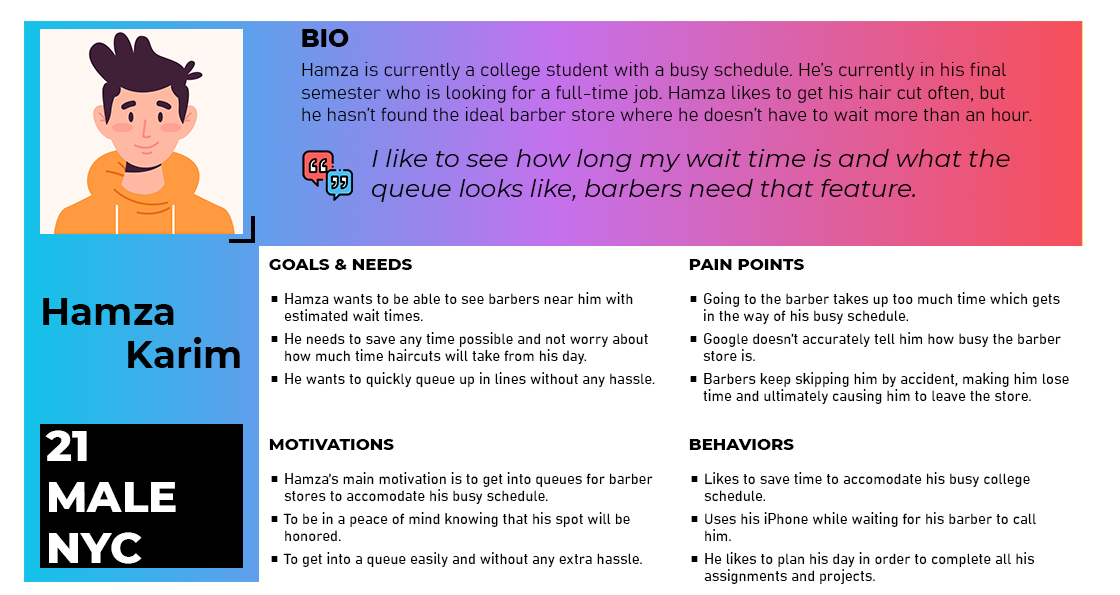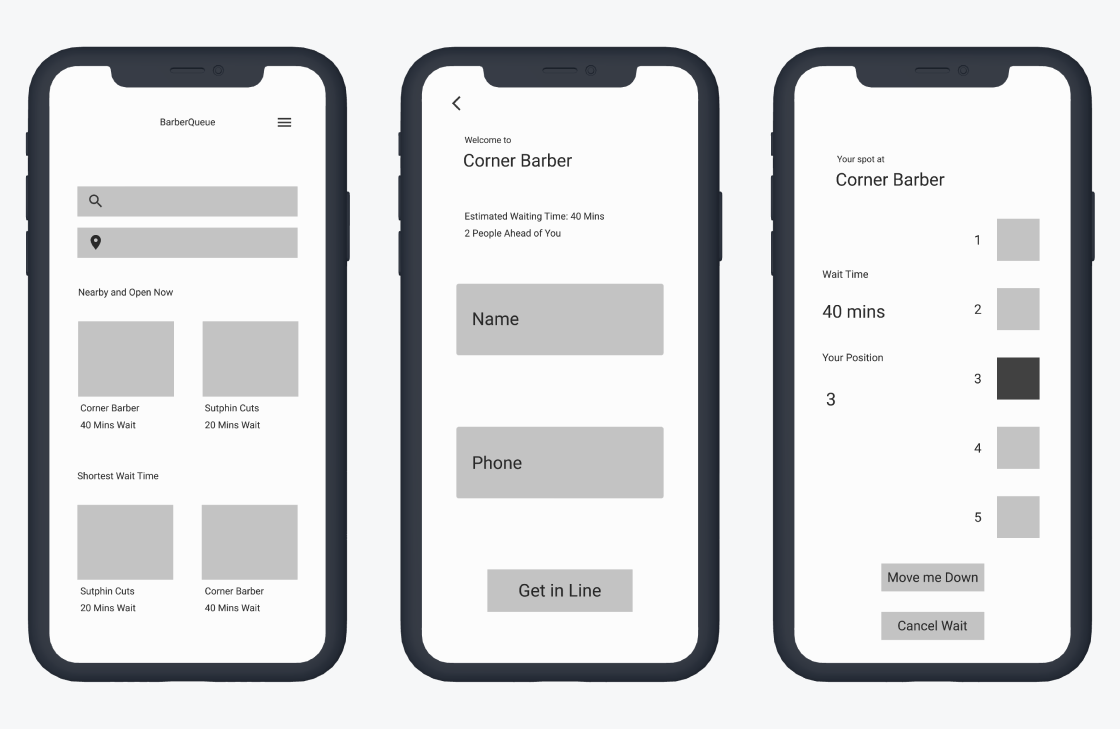BarberQueue
Waitlist app for barbershops which improves the customer experience by providing an estimated time and preventing any queue jumping.
Prototype
Problem
Customers walking into a barbershop and finding a massive queue can lead them to walk away from doing business. In addition to waiting, customers have also experienced getting skipped unfairly which causes them to never return to that particular barbershop. Barbers have a hard time keeping track of people coming in and going out, thus skipping someone accidentally. Overall, not having a waitlist system at a barbershop gives customers a bad experience. There is also no way to tell how long the wait is before going to the barbershop itself.
Solution
BarberQueue will give customers an easy way to reserve a spot on the waitlist. Customers will be given an estimated wait time and position in the queue. Finding participating barbers nearby and their wait times will be easy to access from the main page.
Discover
I interviewed 10 users who recently have been to a barbershop near them to better understand their main frustrations with barbershops. The interview data indicated that users were not happy with how disorganized the queue of the barbershop was. They were being skipped and some of them were not even recognized when they entered the store. This led to confusion and frustration amongst the users not knowing if they were noticed by the barbers who were too busy working. Several users said that they were often skipped, whether by accident or purposely. This led them to eventually not go to the same barbershop again. Some users mentioned that it’s irritating that there’s no way to tell how much the wait time is before going to a barbershop.
There's nothing more frustrating than getting skipped in a barber line because the barber wants to service someone they know first.
- SJ
I switched barbers just because the line was disorganized.
- SM
I wish there was a better way to keep the queue organized instead of playing a guessing game.
- AP
I created two different user personas that allowed me to empathize with the end-users and better follow a human-centered process.


Define & Ideate
The information discovered from my research pointed to the type of product that my users needed - an app that lets the users see wait times and queue up in the barbershop of their choosing.
In order to quickly validate chosen solutions, I quickly created mid-fidelity wireframes using Figma and conducted a series of user tests with a clickable prototype uploaded here.

| Feedback | Result |
| App felt too "crowded" | Shortened the process by removing unnecessary buttons |
| No way to quickly get directions to the store | Added an address section, which quickly redirects to Google Maps or Apple Maps |
| Users weren't too sure what the search options were | Added a text on the search bar that states how users can search for stores |
High-Fidelity Prototype
After rounds of testing and refining designs, I developed a high-fidelity prototype of BarberQueue using Figma. In addition, I noted that my users wanted a simple UI to interact with, which has no distractions.
I decided I could solve this problem by having light and simple theme. I wanted users to feel like they can quickly accomplish the task by opening and using the app. The high-fidelity prototype can be accessed here.

Outcomes & Lessons
This project was my first real experience applying a design thinking process to design an app.
I learned to always test assumptions and have a concrete reason for every element of my design. Also, how it’s important to follow existing patterns and UI elements in order to provide a seamless user experience.

